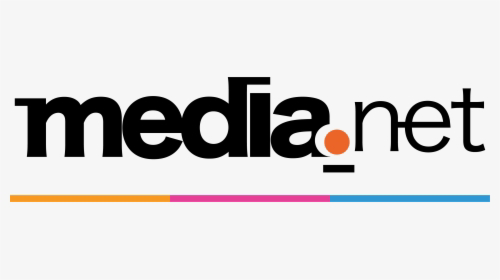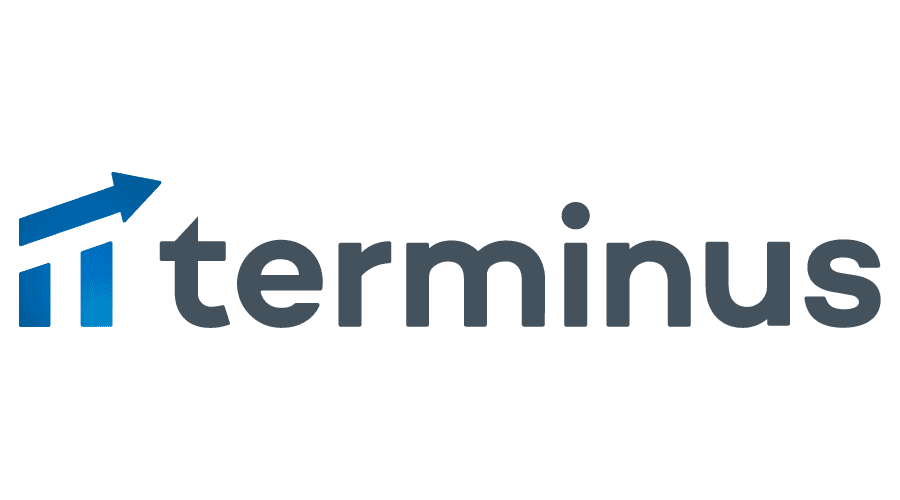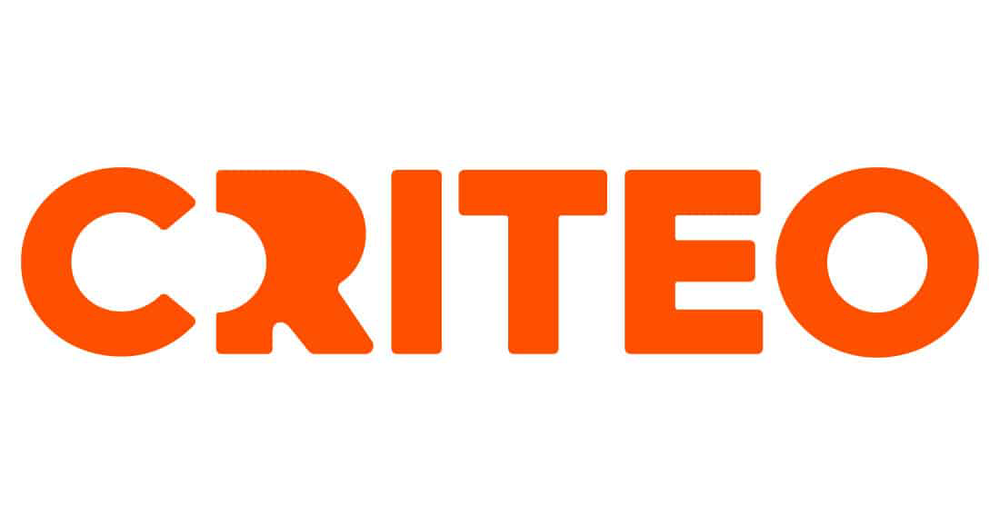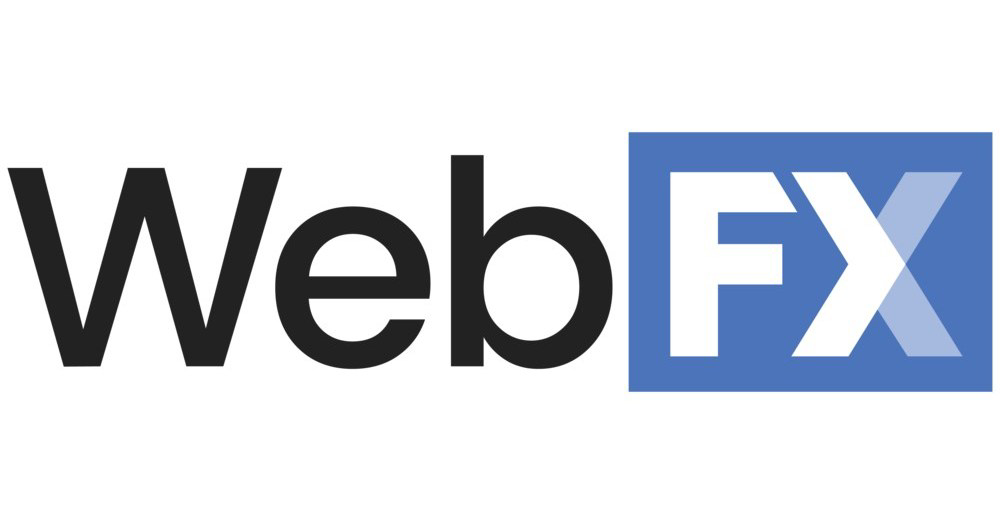
Contextual Advertising: The Complete Guide & Companies List for 2022
When it comes to web monetization and allocating ad dollars, it can seem like an overwhelming process to sort through all of the different channels, ad formats, targeting methods, and platform service providers available in the modern market.
Scoping out the most effective options can feel like an endless search as a seemingly endless wave of new offerings present themselves for consideration and comparison.
Fortunately, an appealing ad targeting trend has found itself at the center of nearly every online marketer’s attention - that trend being contextual advertising.
With a market forecasted to be worth somewhere between 228.66 to 297.68 billion USD by 2023, it’s no mystery why the digital marketing spotlight has been focused on contextual advertising lately - it’s where all the money is moving.

(Source: Statista - An overview of global contextual ad spending from 2020 forecasted through to 2027 compiled by Statistia.)
Understanding why contextual has become so popular doesn’t take much detective work - it’s future-proofed for the cookieless internet and offers better user-experience among a range of other benefits associated with contextual advertising.
But even with the search for a great investment opportunity being narrowed to the field of making ads contextually relevant - there’s still a staggering range of advertising platforms and partners available to choose from, many of which offer niche products and solutions.
In this article, we'll cover how contextual advertising works, and provide an overview of the companies developing the best contextual tools, services, and solutions on the market - including ad monetization platforms commonly used by publishers and ad targeting systems used by advertisers.
Table of Contents
- What is contextual advertising?
- Top Contextual Advertising Companies & Platforms
- The Future of Contextual Intelligence and Cookieless Ad Serving
What is contextual advertising?
Contextual advertising is an automated approach to ad targeting which involves pairing online content with contextually relevant ad promotions, typically achieved by using keyword and category data to create alignment via an algorithm.

(Contextual ads seamlessly align with the subject matter or environment into which they're placed, and can even be up to 10% more engaging than the content itself.)
As a strategy, contextual advertising seeks to capture the attention of individuals during the moment in which they demonstrate interest in a topic - using the content itself to signal what the user is currently interested in, and delivering relevant ad creatives that align with that interest.
Contextual advertising differs drastically from behavioral advertising strategies, which make use of third-party data to identify an individual’s past historical actions taken online, targeting ads towards the user’s behavioral tendencies.
If you’d like to learn more about these two popular (and often confused) ad targeting techniques, you might be interested in reading more about the differences between contextual and behavioral targeting.
What are the benefits of contextual advertising?
There are multiple benefits that contribute to the popularity of contextual advertising. These benefits include:
- Privacy friendly (cookieless ad targeting method)
- Improved user experience
- Increased purchasing intent among visitors
- An increasing share of overall market spending
- Greater brand safety and brand suitability for advertisers
- Supported by advancements in AI technology
- Easier to implement compared to other ad targeting techniques
The importance of cookieless ad serving techniques like contextual targeting has never been higher, with the value of targeted ads having dropped by as much as 60% in environments like the Safari browser where tracking prevention has been implemented.
In a study compiled by TheDrum and GumGum titled "Contextual Advertising: The New Frontier", 61% of publishers in the US reported that they've already begun implenting contextual ads, while 24% of advertisers indicated that they plan to increase their spending on contextually targeted ads.
A survey conducted by Winterberry Group similarly indicates that many publishers have picked up on the necessity of contextual inventory management, with 67% of surveyed media owners indicating that they’ve started making use of contextual segments as of October 2021.

(Source: Winterberry Group: The Outlook for Contextual Solutions in Data Driven Advertising & Marketing)
A wide range of studies and surveys support the effectiveness of contextual ads, and if you’re interested in taking a look at the statistics that are backing all of these advantages, we encourage you to read more about the benefits of contextual ad targeting.
How Contextual Advertising Works
Contextual advertising works by analyzing various context signals in or around the webpages, media, or environments in which ads are served in order to create contextual alignment with the ad's subject matter.
As a few examples, an article about running shoes may serve ads about fitness programs - videos and TV shows about cooking may display banner ads or instream video ads about cooking products, and digital billboards may serve ads based on the weather.

(With contextual advertising, advertisers have incentive to "get into the heads" of their audience with imaginative, contextually relevant ad creatives.)
While each contextual targeting system carries out the process in its own way, contextual advertising generally works the same way across all platforms:
- A publisher’s content is scanned and tagged with keywords and categories
- An advertiser places an order for contextual ad inventory, indicating which keywords and categories they’d like to target with their ad creatives
- The contextual targeting system scans available content and serves the ad to content which meets the ad campaign’s criteria - including contextual relevance
Again, every system works a bit differently, and some platforms may incorporate other audience signals such as demographic info, device usage, and other data to provide enhanced ad targeting options.
If you’d like to put together a strategy to start a contextual advertising program yourself, the "Crawl, Walk, Run Guide To Contextual Targeting" by AdExchanger offers a great read.
For more details on how contextual targeting is handled on different platforms, including Google Ads, check out this complete guide to how contextual ad targeting works.
Examples of Contextual Advertising in Action
Sometimes, the easiest way to understand how something works is through example.
So, what better way to demonstrate contextual advertising in action than with a few practical examples from live ad campaigns that are running today?
Telus conducts contextual video advertising on YouTube

In this example, the mobile service provider Telus serves a pre-roll video ad to a YouTube review about the Samsung Galaxy Note 10+ smartphone - promoting a new video streaming package exclusive to customers who use Telus as their chosen mobile service carrier.
Since it’s likely that users who are watching phone reviews are in the market for a new phone, it makes sense that they might also consider switching service providers at the same time, especially if a special promotion captures their attention.
Because the content of the video itself serves as the signal of a user’s current interest, Telus can reliably target and serve their ad promoting the “Stream+” offer to viewers of this video, as well as similar videos which also focus on phone reviews and comparisons.
If you’re interested in browsing some more examples of video ads in particular, be sure to check out our complete guide to video ad serving.
SteelSeries delivers a multi-format contextual campaign with display and video ads

In another example, the popular live streaming platform, Twitch, owned and operated by Amazon, serves a pair of display ads for a SteelSeries gaming mouse within the “live channel” directory featuring streamers who are playing various games online.
Naturally, individuals who are actively browsing a video game live stream directory are likely to have an interest in playing games themselves, and so a contextually aligned ad for a product and brand associated with gaming is likely to perform well in this environment.

Continuing with another example from SteelSeries promoting their products on Twitch, clicking on an individual livestream session presents a pre-roll instream video ad prior to loading the livestream itself.
In this instance, SteelSeries promotes a different product, the Arctis Nova Pro headset, as part of their contextual ad campaign.
This pair of examples demonstrates how a contextual advertising strategy can make use of a wide range of ad types and formats, while remaining consistent between different mediums.
Curious about what other formats exist for serving ads? Try browsing this ad format gallery.
Burger King delivers contextually relevant DOOH ads to promote nearby store locations

Finally, one more example illustrates how brands can make use of DOOH (Digital Out-Of-Home) in combination with contextual targeting.
In the above image, Burger King serves an ad for their breakfast menu to a digital screen mounted on the side of a bus stop - aligning the contents of the ad with the current time of day.

In a similar example, Burger King shifts the contents of their ad to remain contextually relevant with the current time of day by displaying a standard lunch menu item, replacing the breakfast item previously being featured.
While this is a basic example of contextual advertising being paired with DOOH, the same concept can be used to serve different ads based on factors like the current weather, temperature, geolocation, and even how populated a certain area currently is.
If you’re interested in viewing more instances of digital ads making use of contextual targeting, feel free to check out some more examples of contextual ad targeting.
Are there different types of contextual advertising?
Contextual advertising is simply a method used for serving ads through which ads are placed into contextually relevant web content - the term “contextual advertising” itself refers to the principle of how ads are aligned with the content into which they’re served.
Practically speaking, there aren’t really “different types” of contextual advertising.
However, there are many types and formats of ads with which contextual advertising practices can be paired with to achieve different effects and results - and for this reason, many people often refer to these different combinations as “types” of contextual advertising.

When this interpretation is taken, there can be considered as many “different types” of contextual advertising as there are ad formats - as contextual targeting is an approach which can be flexibly paired with just about any method of serving an ad.
For instance, some of the many different types of ads which can make use of contextual targeting including display ads, video ads, text ads, native ads, social ads and just about any other type of ad unit you can think of.
In many cases, when these types of ads are paired with contextual targeting, they’ll be referred to as “contextual display ads”, “contextual video ads”, etc. - though all of these “types” of ads use the exact same principle of contextual alignment to deliver their messages.
There are also infinite possibilities when it comes to the format in which contextual ads can be served, as contextual targeting doesn’t limit the shape or size of the ad in any way. Just take a look at this ad format gallery if you’re interested in seeing some examples.
The only time “different types” of contextual advertising might be referenced is during a discussion about approaches to contextual targeting - at which time you might hear the phrases “category contextual targeting” and “keyword contextual targeting” being used.
These two different contextual targeting options offer various ways to approach a contextual advertising strategy, and we’ve covered each of them in depth if you’re interested in learning more - read more about category and keyword contextual targeting.
Contextual advertising vs programmatic advertising - what’s the difference?
Contextual advertising is a technique for establishing alignment between where an ad is shown and the contents of the ad itself, while programmatic advertising refers to an automated method through which the details surrounding media buying are managed.
In ad tech, the term “programmatic” is used almost entirely synonymously with “automated”.

“Programmatic advertising” is generally used when referring to ad platforms upon which the purchasing and placement of ads is conducted by various components of the programmatic ecosystem, such as SSPs, DSPs, as well as ad networks and ad exchanges.
[Learn more - how is contextual targeting related to programmatic advertising?]
As a concise summary, contextual advertising is a strategic and humanistic methodology for selecting where ads should be served online, while programmatic advertising is a set of technologies which enable the automated execution of ad placement and purchasing.
Top Contextual Advertising Companies & Platforms
Most of the time, finding a solution to take care of a specific need like an approach to monetization or an ad targeting method is a simple internet search away.
However, when it comes to contextual advertising companies, the search can be challenging.
The trouble is that sites like Capterra, G2, Trustpilot, Sourceforge, and other software comparison directories don’t offer filters for contextual solutions.
Furthermore, while the definition of "contextual advertising" itself is relatively straightforward, there’s still quite a bit of confusion over what comprises a “contextual advertising solution”, depending on who you ask - making it difficult for businesses to find what exactly they’re looking for.

(Source: Winterberry Group: The Outlook for Contextual Solutions in Data Driven Advertising & Marketing)
In this section, we've done our best to highlight some of the most popular contextual advertising solutions on the market and the companies behind their development - including some top monetization platform picks for publishers and targeting tools for advertisers specifically.
Most Popular Contextual Platforms & Tools
Google Ads
With little introduction needed, Google Ads continues to be one of the most popular contextual solutions available on the market.
By becoming a part of GDN (Google Display Network), publishers are able to access an effective channel for auctioning off their remnant ad inventory, while advertisers are able to place their ads across a wide range of contextually relevant content on the network.
In recent years, Google has also made several proposals to address privacy concerns ahead of their announcement to discontinue third-party cookies on the Chrome browser, including the now discontinued “FLoC” program, and more recently the “Topics” program.
- [Read more about how contextual targeting works on Google Ads]
- [Read more about Google’s “Topics” proposal]
Oracle (Grapeshot)
When it comes to the “OG” of contextual advertising, look no further than Grapeshot - a contextual advertising company originally founded in 2006 by John Snyder and Dr. Martin Porter.
Snyder has been championing contextual targeting since the early days of behavioral advertising’s introduction in 2009, including during an ExchangeWire interview from 2011 in which many modern and familiar contextual talking points are mentioned.
In 2018, Grapeshot was acquired by Oracle - a company originally offering database management solutions since its founding 1977, which later expanded into the CRM sector in 1998 and eventually into cloud data solutions in 2016.
More recently in 2021, Oracle CRM and Oracle Cloud were merged into Oracle Advertising and Customer Experience (CX) to combine the benefits of each solution into a unified service offering.
With a quick fast-forward to the present, Oracle now offers one of the most robust audience data management solutions on the market, along with - you guessed it - a contextual targeting solution which has been around since “before contextual advertising was cool”.
While approaching Oracle as a solution provider is no small undertaking (with some major brands such as Red Bull even going so far as to rename their entire F1 racing team to “Oracle Red Bull Racing”), companies can expect a best-in-class set of tools for the effort.
GumGum
Grapeshot wasn’t the only company to see an opportunity in context-based ad targeting back in the 2000s, with GumGum being yet another prominent presence within the contextual advertising industry since its founding year in 2008.
With close to 15 years worth of experience focused solely on developing solutions for publishers and advertisers that enable contextually relevant ad serving, GumGum is a leading technology and research provider within the modern contextual ecosystem.
As a contextual intelligence company, GumGum’s flagship product is Verity - a proprietary contextual intelligence platform which powers the content categorization, keyword targeting, user sentiment evaluation, and brand safety and suitability components of their solutions.
GumGum separates their service offerings into publisher and advertiser categories - bridging the supply and demand of both parties through an expansive contextual ad network that supports both display and video ads (including OTT and CTV) in a wide variety of formats.
Amazon Ads
Like Google, Amazon doesn’t need much of an introduction as a company - though their recent strategy for success in the retail media sector and latest earnings reports may come as a surprise to those unfamiliar with the company’s latest advancements.
In one of their latest updates, Amazon announced the addition of contextual targeting to their sponsored display ads program - an upgrade which will enable brands to reach their customers using contextually aligned sponsored listings.
Having posted $31 billion in ad revenue in 2021, Amazon’s move to provide access to one of the most popular advertising techniques of the privacy-first era makes them an important player for publishers and advertisers to pay attention to, especially in the eCommerce sector.
Best Contextual Ad Platform Solutions Built for Publishers
AdButler
That name seems to ring a bell!
AdButler is an ad server first and foremost, and has been developing both third-party and first-party ad serving tools for over 20 years. The platform offers a full suite of ad serving solutions for every type of ad, including display, video, email, mobile, and many more.
The platform offers an extensive range of pre-built ad formats, with the option to have new custom formats developed for use at any time.
With full programmatic support for pre-bid auctions, as well as a robust ad serving API and custom development services, AdButler is a go-to monetization platform used by companies across all industries throughout the world.
In addition to its capable fundamentals as an ad server, AdButler offers a contextual management solution that allows publishers to automatically and continuously have AI sort their entire inventory into standardized IAB categories and keywords.
As a key market differentiator, AdButler provides an opportunity for publishers to showcase their segmented contextual inventory directly to their advertising partners by leveraging the benefits of a self-serve ad portal - opening up direct deals as an avenue for monetization.
By accessing a detailed analytics panel, publishers can monitor the performance for each of their contextual segments, identify trends to make informed content decisions, include detailed statistics in their media kits to justify charging higher CPMs, and much more.
[Learn more about AdButler’s contextual management platform]
[Learn more about AdButler’s self-serve advertising solution]
CodeFuel
CodeFuel is a monetization platform for all kinds of digital properties, including websites and apps, which offers the ability to add a proprietary search feature to web properties as its primary market differentiator.
The platform includes several solutions for monetizing proprietary search results, including optimized landing pages, related product shopping ads, custom text ads, and more.
CodeFuel also offers a contextual monetization option through their IDP (Intent Discovery Platform) solution, which automatically assigns contextually relevant shopping ads to web content by pulling live ad creatives from CodeFuel’s advertising partners.
Media.net
Media.net is an ad network that offers a contextual monetization solution for publishers as part of its service offering - with an emphasis on exclusive access to demand generated by the Yahoo! Bing Network as its market differentiator.
Publishers can use a simple code snippet from the platform to connect their web properties to Media.net’s contextual ad network - which supports a variety of different ad formats.
Media.net also optionally offers access to a team of ad specialists that can monitor and optimize inventory performance over time.
As an ad network, Media.net also enables advertisers to purchase contextual media across their range of active publishers within the marketplace.
Illuma
Illuma is a London-based advertising company focused entirely on providing contextual solutions to publishers and advertisers.
Founded in 2016, Illuma has more recently hired John Snyder, founder of Grapeshot, in the role of contextual AI specialist.
Illuma’s publisher solution emphasizes an AI-guided ability to automatically optimize live ad campaigns, as live user behavior merges with contextual intelligence to increase inventory performance.
On the advertiser side, Illuma’s proprietary algorithms seek out top-performing publisher inventory based on campaign criteria, and find similar inventory to increase audience reach without compromising brand suitability.
As a company dedicated solely to contextual advertising, several other solutions are offered as well, including real-time interest monitoring, support for contextual lookalike audiences, dynamic keyword updating, and a dedicated contextual CTV solution.
Connatix
Connatix is an OVP (online video player) infrastructure provider, offering publishers the ability to easily host and deliver video content to their web properties.
“Elements” is Connatix’s proprietary OVP solution, which comes with a built-in ad server, ad exchange, and offers video storage and hosting free of charge.
As part of Connatix’s service package, the “Deep Contextual” solution offers a contextual intelligence layer which leverages deep learning, computer vision, and natural language processing to regularly conduct video content analysis.
This contextual information can then be used by advertisers to perform contextually targeted media buying across the video inventory provided by Connatix’s publisher network.
Vibrant Media & Quintesse
Vibrant Media is a video advertising network that offers a set of contextual video solutions for publishers, as well as contextual targeting options for advertisers.
Vibrant Media’s offerings include out-stream video ads which are initiated by users themselves when viewing a page, as well as the ability to contextually align ads using the “InArticle” and “InImage” solutions which sync ads with text and image context, respectively.
A range of controls are also offered to allow publishers to decide which articles, ads, and other elements they’d like to include or disclose from their contextual monetization strategy.
Vibrant Media also offers an extended set of contextual functionalities - including machine learning, tone detection, dynamic content protection, and more through their separately branded Quintesse platform.
Quintesse also offers pre-bid targeting filters as well as post bid monitoring and reporting for advertisers interested in conducting contextually targeted ad campaigns.
[Learn about Vibrant Media’s contextual solutions for publishers]
[Learn about Quintesse’s extended contextual functionalities]
[Find out more in Vibrant Media’s contextual solution press release]
Vungle
Vungle (owned and operated by Liftoff.io) is an ad tech service provider and ad network focused on mobile app and game advertising as its market differentiator.
The platform serves as a contextual ad network, powered by the “Ad Intelligence” solution offered by GameRefinery (also owned and operated by Liftoff.io).
Vungle offers an SDK (software development kit) in addition to monitoring tools for publishers to track monetization performance - and can also provide development work to support custom ad formats.
[Learn more about Vungle’s monetization solution for app publishers and their mobile media buying options for advertisers]
[Read more about contextual ad networks and a list of top networks, as well as a dedicated article on mobile contextual traffic on Vungle’s blog]
Integral Ad Science
Integral Ad Science is a digital ad verification and optimization company that offers solutions for publishers, brands, agencies, and platforms within the ad tech ecosystem.
As part of their service offering, the platform offers a “context control” feature, which enables publishers to apply standardized IAB category taxonomies as well as Integral Ad Science’s proprietary list of categories across their library of content to enhance contextual alignment.
AdMedia
AdMedia is an omnichannel advertising platform that provides media buying options for display, video, search, email, social media, mobile, and more.
As part of their service offering for publishers, AdMedia provides a contextual intelligence tool that allows first-party search data to be analyzed, providing web property owners with insights that can identify opportunities to lift search-based revenue.
AdMedia also offers contextual targeting options for advertisers looking to purchase media through the platform.
SeedTag
SeedTag exclusively focuses on contextual advertising, offering contextual intelligence solutions for both publishers and advertisers.
On the publisher side of their service offering, SeedTag offers an ad script integration which is compatible with most first-party ad servers, making it possible to add support for contextual ad placements to ad servers which don’t already support the feature.
[Learn more about SeedTag’s contextual advertising solution for publishers]
[Learn more about SeedTag’s contextual targeting solution for advertisers]
Best Contextual Ad Targeting Systems
Terminus
Terminus is an ABM (account-based marketing) solution provider which offers advertisers a suite of targeting tools that enable the delivery of a wide range of “ad experiences” (or “formats” across a broad selection of channels and ad networks.
Among their diverse list of ad experiences is the ability to contextually target specific content across their series of ad networks.
In addition to offering contextual targeting, Terminus also offers first-party data capture and management solutions as a part of its range of services, empowering advertisers to implement cookieless targeting across the entirety of their funnel and advertising strategy.
Criteo
Criteo is an advertising company that offers a broad range of solutions - with a robust retail media advertising platform as one of its primary service offerings catered towards retailer publishers.
Criteo’s contextual solution provides brand marketers with a way to deliver contextually relevant ad messaging through product recommendations, which are targeted using first-party data gathered from across Criteo’s network of partners.
Comscore
Comscore is a cross-platform media measurement and analytics company offering data management support for desktop, mobile, and CTV devices.
As part of their service offering, Comscore offers a robust set of pre-bid inventory filters that enable advertisers to target contextually relevant audiences across the most used DMPs and DSPs in their tech stacks.
Peer39
Peer39 is a contextual data management platform for advertisers, with an additional service that offers show-level analytics forCTV advertising.
Peer39’s “Advanced Contextual” solution is a set of pre-bid inventory filters - featuring options for creating custom contextual categories, weather targeting, sentiment targeting, trend targeting, and many other cutting-edge options that support contextual alignment.
The Advanced Contextual solution is compatible with Peer39’s “Contextual Data Marketplace”, a series of popular media buying platforms including TheTradeDesk, Yahoo (formerly Verizon Media), Adobe, Xandr, MediaMath, and many more.
IBM Watson Advertising
IBM Watson Advertising was established back in 2016 with the acquisition of The Weather Company’s ad sale business.
Since then, IBM’s advertising program has continued to develop with an emphasis on leveraging AI and automation in the ad serving process.
As an early player in the contextual advertising space, IBM Watson Advertising offers comprehensive weather-based contextual targeting as its primary differentiator in the market, among its numerous other capabilities.
[Visit IBM’s weather targeting solution and weather analytics solution pages]
[Read more about IBM’s take on contextual advertising and contextual video ad targeting]
Smart AdServer
Smart AdServer is a popular ad server solution provider, offering functionalities for both advertisers and publishers.
The company offers contextual targeting options for the buy-side (aka third-party side) of its product offering, with an emphasis on brand suitability, built-in connections with high quality inventory supply sources, and support for any ad format.
DoubleVerify
DoubleVerify is a digital media measurement company centered around facilitating transparency, trust, and performance optimization in digital advertising.
With an emphasis on combating ad fraud, enhancing ad viewability, and improving brand safety and suitability, the logical next step for DoubleVerify in preparing for the privacy-first era was to launch a contextual audience targeting solution - named “Custom Contextual”.
While the Custom Contextual solution isn’t offered directly as a product through their website, DoubleVerify’s contextual technology has been directly implemented on partnered platforms, including MediaMath, Yahoo (formerly Verizon Media), and Xandr.
ChannelSight
ChannelSight is an omnichannel eCommerce and retail intelligence platform, built to help brands advertise their products and manage campaign performance.
ChannelSight offers a “Where To Buy” solution, allowing advertisers to link their product pages to their contextually relevant content across the web, including social posts and promotional ad campaigns.
Performance data from the solution illustrates consumers’ path to purchase, enabling informed decision making to support a privacy-friendly ad serving strategy.
Knorex
Knorex is a cross-channel, omniplatform solution for advertisers seeking a universal marketing platform to manage multiple advertising campaigns from a unified dashboard.
As part of their service offering, Knorex has implemented contextual targeting features into its suite of campaign management tools, offering both standard IAB keyword and category taxonomies, as well as support for custom contextual segments.
- [Visit Knorex’s contextual targeting overview (which includes a video demo of their solution)]
StackAdapt
StackAdapt is a programmatic self-serve advertising platform that allows advertisers to create and manage their own contextual advertising campaigns.
The platform offers both a “Page Context AI” and “Keyword Rule Targeting” option for contextually relevant media purchases, and offers a programmatic algorithm that consistently updates and fine-tunes campaign performance over time.
AdRoll
AdRoll is an omni-channel growth marketing platform which allows advertisers to create and manage numerous types of ad campaigns from a single dashboard.
As part of their wide range of available ad channels and formats, AdRolls supports contextually targeted ad campaigns.
[Read more about contextual targeting and best practices for contextual targeting on AdRoll’s blog]
Fluid Ads
Fluid Ads offers both a self-service advertising solution for marketers, as well as managed campaign services for advertisers who’d like to take a hands-off approach to creating and optimizing campaigns.
In addition to a built-in ad designer and campaign reporting, Fluid Ads supports contextual advertising as one of their targeting solutions.
Amobee
Amobee is an advertising platform company founded in 2005, offering omnichannel support for advertisers and broadcasters to unify their campaign management across TV, CTV, and social media, and other digital channels.
Amobee’s “Smart Contextual” solution offers insights into content, topic, and conversation trends across all channels to help advertisers and broadcasters make more informed decisions surrounding their advertising strategy.
Digilant
Digilant is a digital marketing company that provides solutions for advertisers, agencies, and in-house marketing teams - offering a broad set of marketing services that include media planning and strategy, creative development, SEO, influencer marketing, and much more.
As part of their managed advertising service packages, Digilant leverages contextual data providers including Oracle, Peer39, and Comscore to ensure contextually relevant targeting is incorporated into the ad campaigns run on behalf of their clients.
Silverpush
Silverpush is a contextual advertising service provider that emphasizes contextual video advertising in OTT and CTV as its focus.
The company offers two solutions, referred to as “Mirrors” and “Parallels”, each of which are designed to synchronize ad creatives with video and television ads in real-time through the use of AI content recognition to enhance brand safety and suitability.
ChannelFactory
ChannelFactory is a contextual targeting solution that focuses exclusively on YouTube ads as its market differentiator - leveraging its proprietary “ViewIQ” solution to analyze all of YouTube in real-time.
[Learn more about ChannelFactory’s approach to contextual YouTube ads]
[Check out an overview of contextual targeting’s importance and history by ChannelFactory]
Douglas Marketing Solutions
Douglas is a European based beauty retailer, which offers a variety of ways for brands to advertise through Douglas Marketing Solutions - including options for on-website sponsored ads and off-website social media and search ad placements.
As part of their tech stack, Douglas works with Criteo to add contextual relevance to their beauty-and-lifestyle based advertising campaigns.
Advanced Contextual
Advanced Contextual is a company focused entirely on providing contextual tools to publishers and advertisers that allow them to better understand content consumption trends.
As one of their primary market differentiators, Advanced Contextual offers a solution for advertisers named “Advanced Extension”, which aims to improve upon standard contextual targeting by leveraging an advertiser’s first-party data during ad placement.
By mixing contextual signals and first-party data, the benefits of contextual advertising are supported by confirmed behavioral and interest-based trends from an advertiser’s customer base, improving campaign efficacy.
Advanced Contextual also offers a contextual audience segmentation tool for publishers.
Services That Indirectly Support Contextual Ad Campaigns
Bannerflow
Bannerflow is an ad creative production suite which helps advertisers to create and manage all of the creatives featured in their ad campaigns.
Bannerflow recently added a feature to their service offering which allows advertisers to sort their creatives by contextual categories, making it easier to align creatives with contextually relevant campaigns.
Instapage
Instapage is a popular landing page building tool which offers features to help advertisers manage the pages associated with their ad campaigns.
While the platform doesn’t offer contextual targeting directly, it does provide a method for marketers to organize their landing page creation process and to synchronize their pages with the different keywords and categories being used across their contextual ad campaigns.
WebFX
WebFX is a digital marketing agency which offers a broad range of services including SEO, PPC, social advertising, web design, and more.
While WebFX doesn’t offer a contextual solution of its own, the services offered by the company allow both publishers and advertisers to outsource elements of contextual ad inventory and ad campaign optimization to a team of qualified professionals.
The Future of Contextual Intelligence and Cookieless Ad Serving
When it comes to the future of digital privacy in ad serving, there are two main lines of development taking place - advancements surrounding contextual intelligence solutions, and technology solving for privacy legislations via other approaches to cookieless ad serving.
In an article from all the way back in 2000 by Harvard Business Review titled "Contextual Marketing: The Real Business of the Internet", a prediction of a contextually-driven, “ubiquitous” internet advertising environment has fully manifested in modern times.
As made evident by the list of solutions above, there are virtually endless approaches, mediums, and channels through which contextual strategies can be implemented by publishers and advertisers - with one of those approaches being contextual intelligence.
Contextual intelligence refers to the practice of gathering and analyzing details about various ad-capable environments and how users interact with them, including content, media, apps, virtual experiences (games, virtual reality, etc.), and real-world locations.

The insights gathered from contextual intelligence allow businesses to take their contextual strategies a step further by adding a layer of behavioral data into the mix, an approach which has been proven to increase effectiveness in a study conducted by ResearchGate.
Contextual intelligence also enriches traditional contextual inventory with additional signals which advertisers can target - for instance, using computer vision to include or disclude certain elements from videos to positively impact and preserve brand safety and suitability.
However, as advanced as artificial intelligence has become, it’s still important to keep performance-based expectations grounded in reality.

(Source: @AdtechGod - follow them on Twitter!)
Of course, while the above tweet was primarily made for entertainment purposes, and machine learning is capable of generating some very effective results, the image does a great job of conveying the importance of not “over-sensationalizing” AI’s current capabilities.
While every technology has its mix of strengths and weaknesses, the contextual advertising ecosystem is sure to continue evolving alongside AI developments as its emphasis in advertising continues to increase.
Finally, a discussion about the future of contextual advertising wouldn’t be complete without a mention of other forms of cookieless ad serving being developed - with the spotlight giving the most attention to Google in recent years.
Despite originally proposing FLoC as a successor to third-party cookies, its subsequent rejection by the ad tech community at large, and the newer proposal posed in the form of Google Topics, the ruler of search has yet to offer a suitable cookie substitute.
What’s more, while Google has continuously sited that the end of third-party cookies are just around the corner, delays seem to keep coming up, and many parties speculate that Google will continue stalling for many deadlines to come.
Similar solutions that focus on identity graphing as a means of cookieless ad targeting are at a similar standstill based on commentary provided through a Digiday article on the topic.
““The lack of maturity among the solutions, combined with a lack of understanding how to assess the impact by marketers, puts the industry in a real quagmire. The solutions just aren’t fully established or completely understood yet.”
Greg Stuart, CEO of MMA Global
Companies such as LiveRamp and ID5, while having taken substantial strides in privacy friendly approaches to user identification, were mentioned by Greg as being “difficult for marketers to back” in their current states.
So, what does all of this mean for the future of cookieless advertising?
The unfortunate answer is that a lot of it is still up in the air - but there are clearly quite a few exciting developments being made that both publishers and advertisers can look forward to.
In the meantime, contextual advertising seems to be the best bet for those who want to update their strategies to comply with the latest privacy legislations through the practice of cookieless ad serving.
Offer cutting-edge ad placements to your advertising partners with a contextual management platform
Contextual advertising is at the forefront of consideration for most publishers and advertisers - and finding a suitable solution can prove to be challenging with so many companies offering different tools on the market.
In case you missed us in the solutions list (which would be understandable, it’s a long list!), AdButler is an ad server and management suite which offers a complete contextual segmentation and reporting system.
[Jump to AdButler in the list of contextual solutions for publishers]
When combined with AdButler’s self-serve advertising portal, publishers can implement a one-of-a-kind inventory management system that empowers them to showcase and monetize their custom contextual segments - either as direct deals or as tagged programmatic inventory.
With so many unknowns surrounding cookieless ad serving, it pays to have a reliable and knowledgeable partner by your side in the pursuit of lifting revenue moving forward - and our team is ready to help!
The AdButler team has over two decades of experience in providing and configuring ad serving solutions for both publishers and advertisers.
Check out AdButler's contextual management platform for yourself.
We’d love to share a conversation with you. Ask us a question today!






























